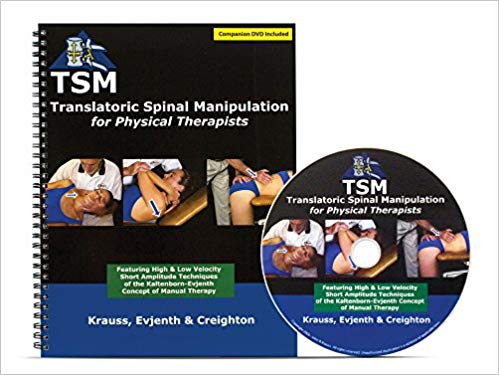Translatoric Spinal Manipulation for Physical Therapists
$75 Original price was: $75.$26Current price is: $26.
Shopping Instructions:
- DISCOUNT 15% : SHOP15
- Product Delivery: Within 1 – 12 hours after purchase.
Translatoric Spinal Manipulation (TSM) consists of a series of high- and low-velocity manipulative spinal techniques, which emphasize the use of small amplitude, straight-line (translatoric) traction and gliding impulses delivered parallel or perpendicular to an individual vertebral joint or movement segment.
Translatoric Spinal Manipulation for Physical Therapists
Translatoric Spinal Manipulation (TSM) consists of a series of high- and low-velocity manipulative spinal techniques, which emphasize the use of small amplitude, straight-line (translatoric) traction and gliding impulses delivered parallel or perpendicular to an individual vertebral joint or movement segment.
TSM emphasizes the use of either direct manual stabilization or the use of spinal pre-positioning to restrict the amount of motion occurring at adjacent spinal segments during the translatoric impulse.
Delivering translatoric impulses (in the form of disc traction, disc glides, facet traction and facet gliding) to an individual joint or spinal motion segment while using stabilization provides the manual therapist with a manipulative tool that has a predictable effect in terms of pain reduction and motion restoration with minimal potential risk of patient injury.
Includes book and companion DVD. Written by John Krauss, Olaf Evjenth and Doug Creighton.
About the Author
John R. Krauss, PT, PhD, OCS, FAAOMPT
Dr. Krauss is the coordinator of the Orthopedic Manual Physical Therapy Graduate Certification and an Associate Professor at Oakland University School of Health Sciences. Dr. Krauss has authored/co-authored numerous books, book chapters and peer-reviewed articles on manual treatment for a variety of orthopedic conditions.
Get Translatoric Spinal Manipulation for Physical Therapists download right now!
Course Features
-
Lectures
0 -
Quizzes
0 -
Duration
Lifetime access -
Skill level
All levels -
Students
0 -
Assessments
Yes
Related products
HEALTH & MEDICAL
HEALTH & MEDICAL
HEALTH & MEDICAL
HEALTH & MEDICAL
Dr. J.E. Williams & Kevin Gianni – How to Read Your Blood Tests
HEALTH & MEDICAL
Dr Heidi M Crocker – Yoga Alignment | Speaker: Heidi Crocker EdD, DC
HEALTH & MEDICAL
HEALTH & MEDICAL
Bernadette Giorgi – Attitude Ballet & Pilates Fusion – Just B Method












